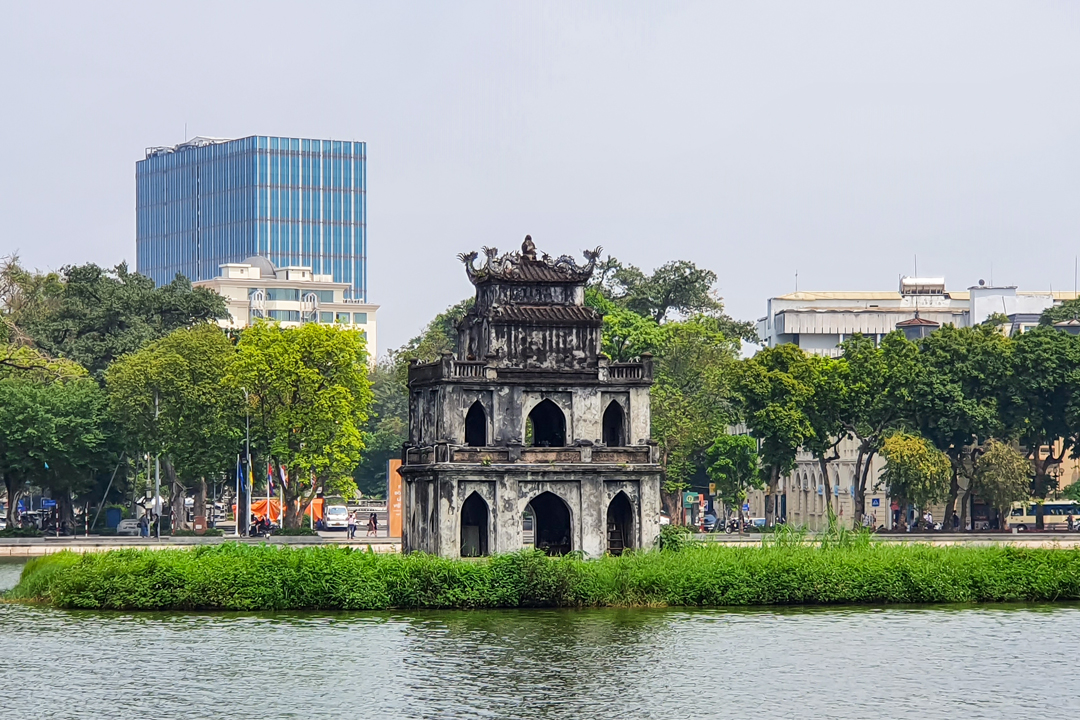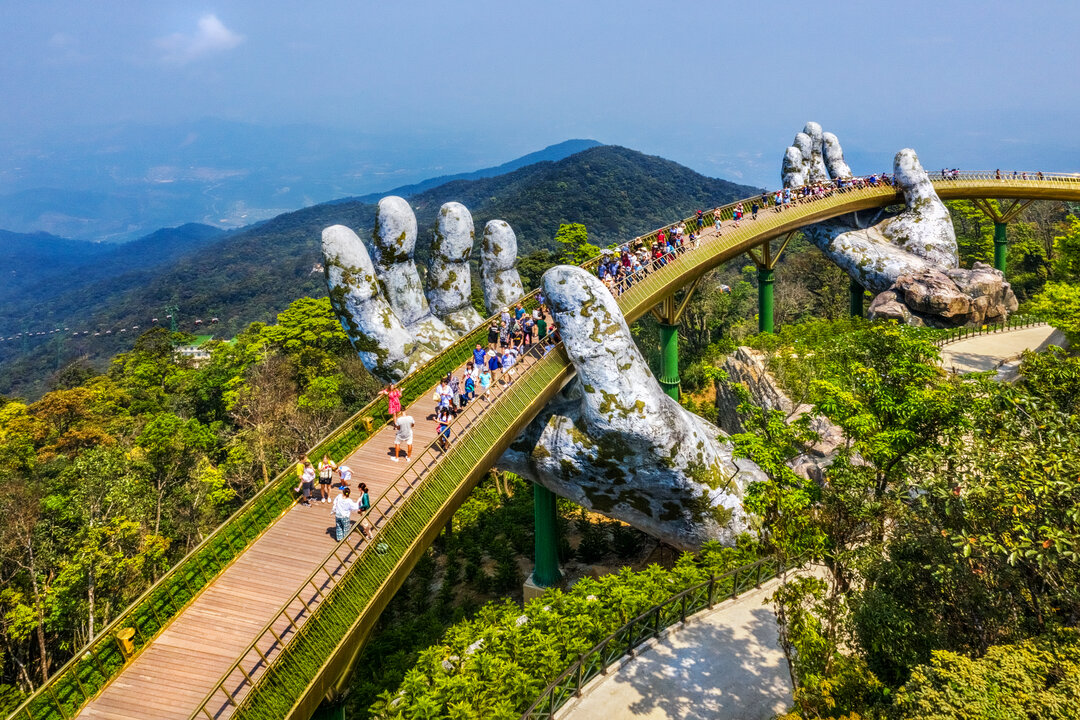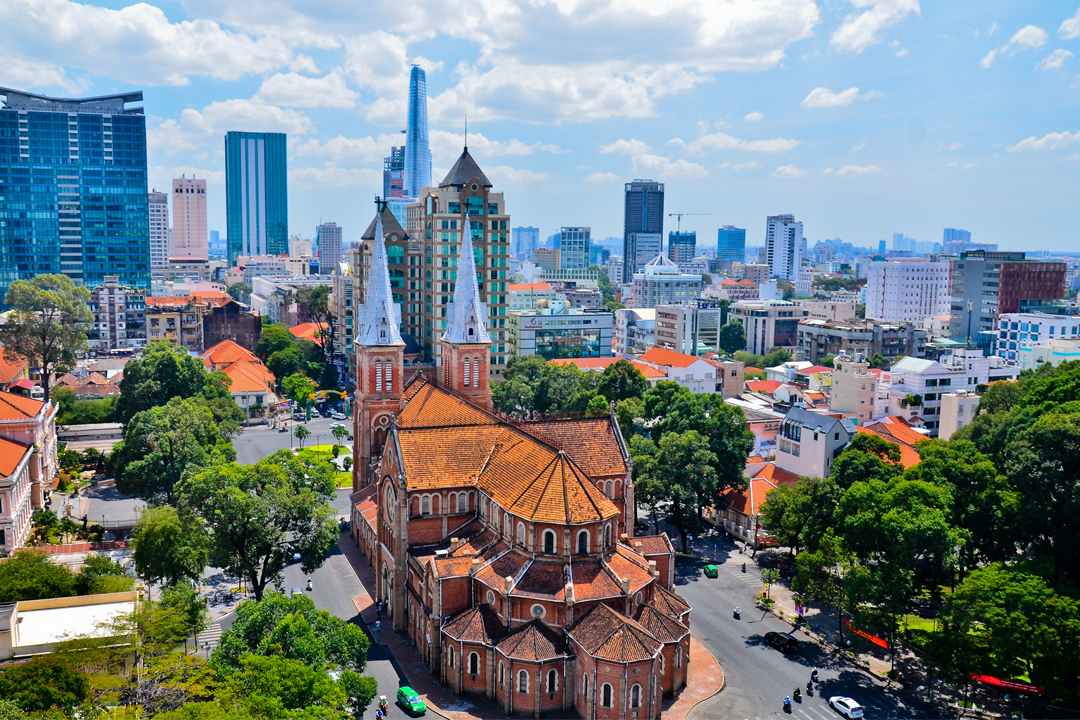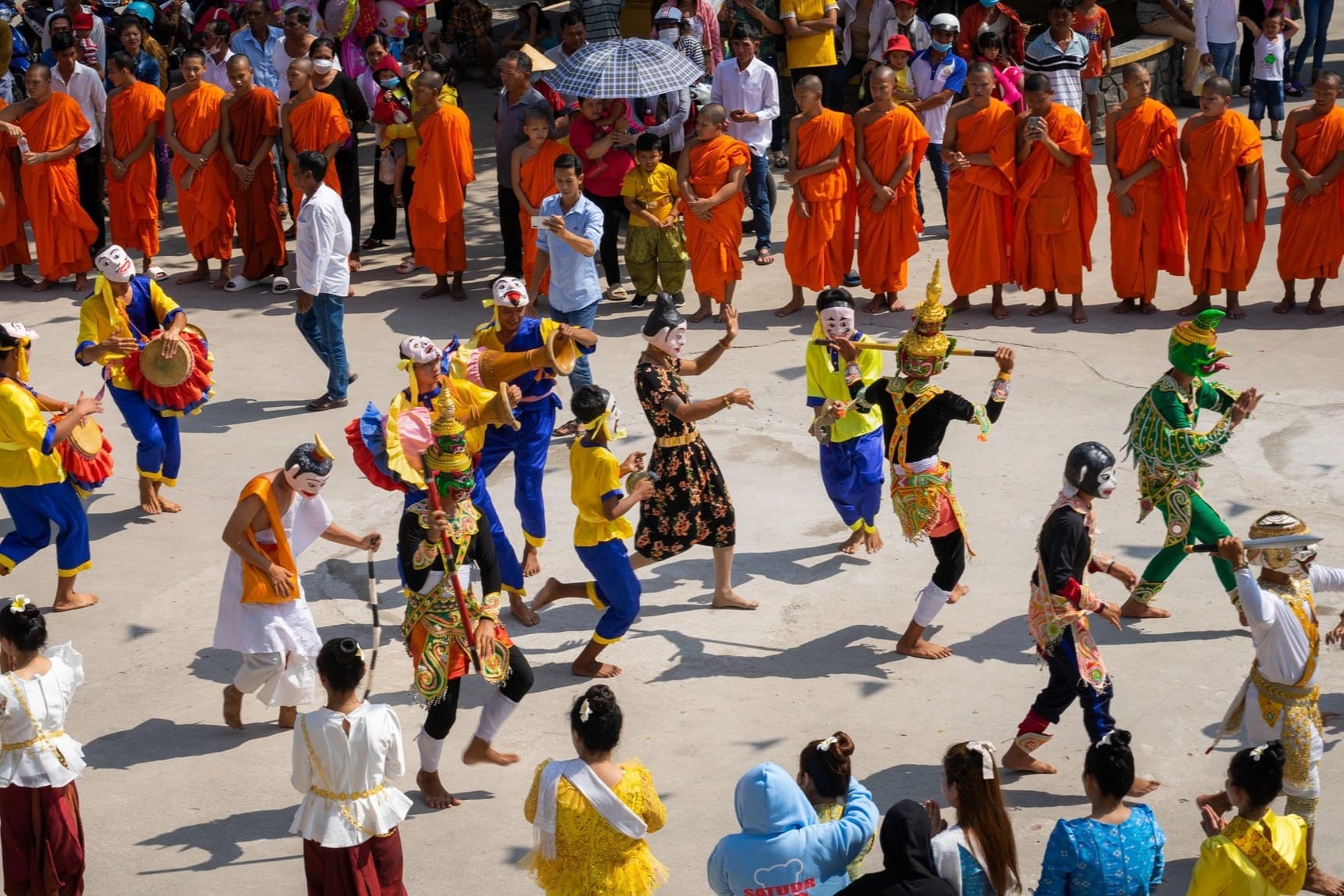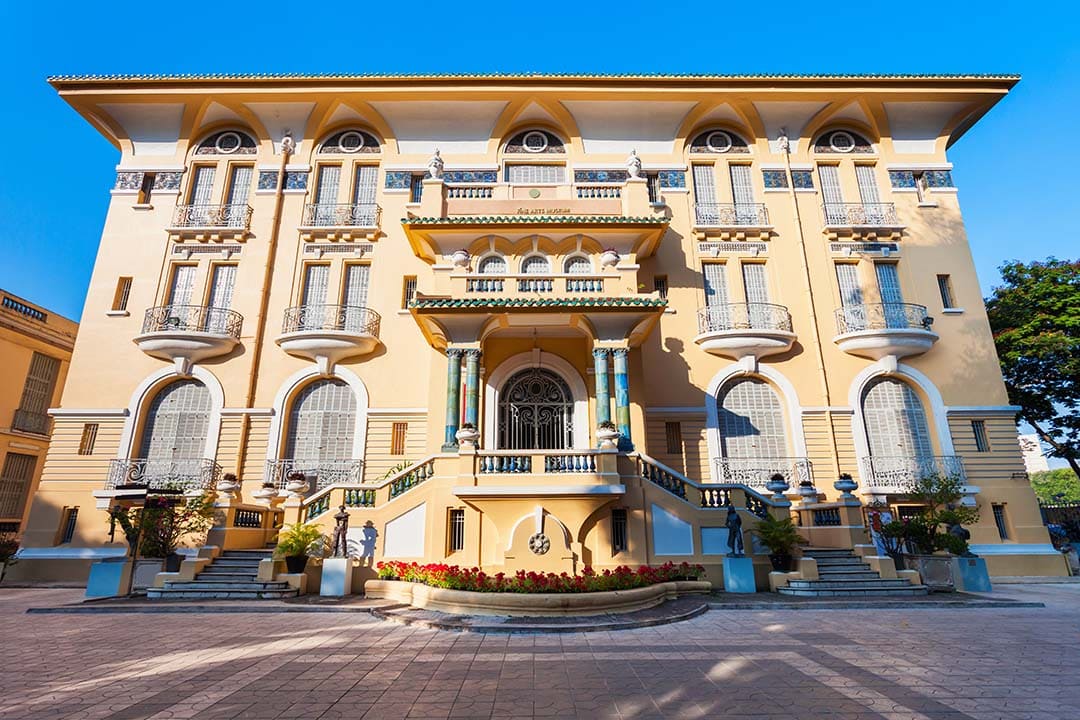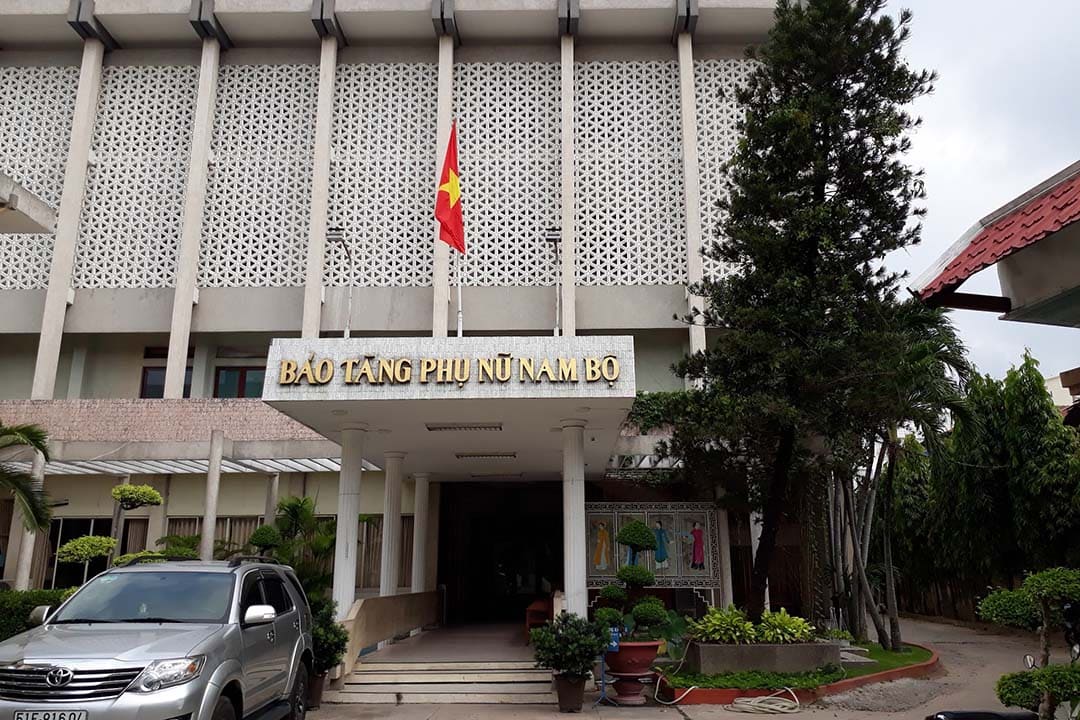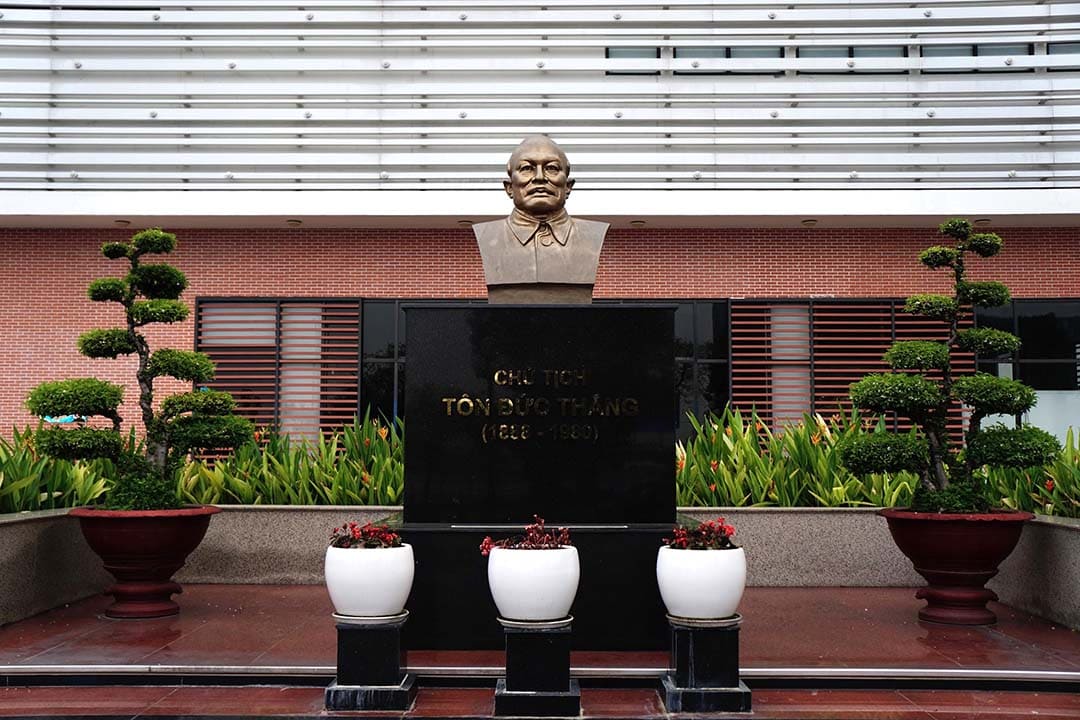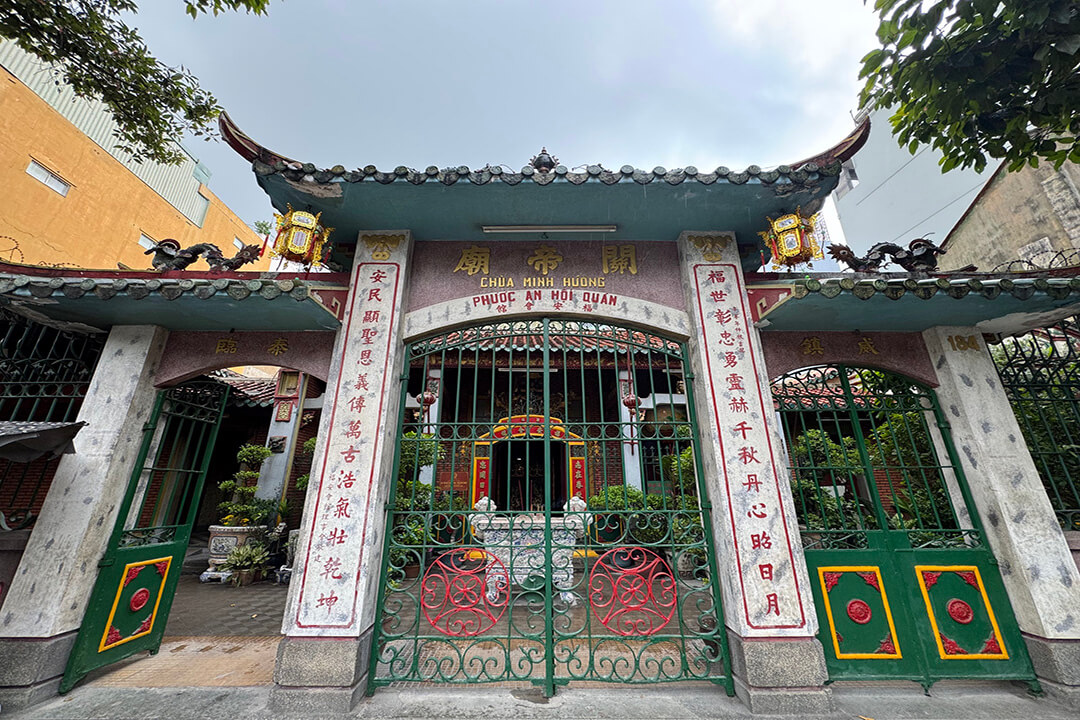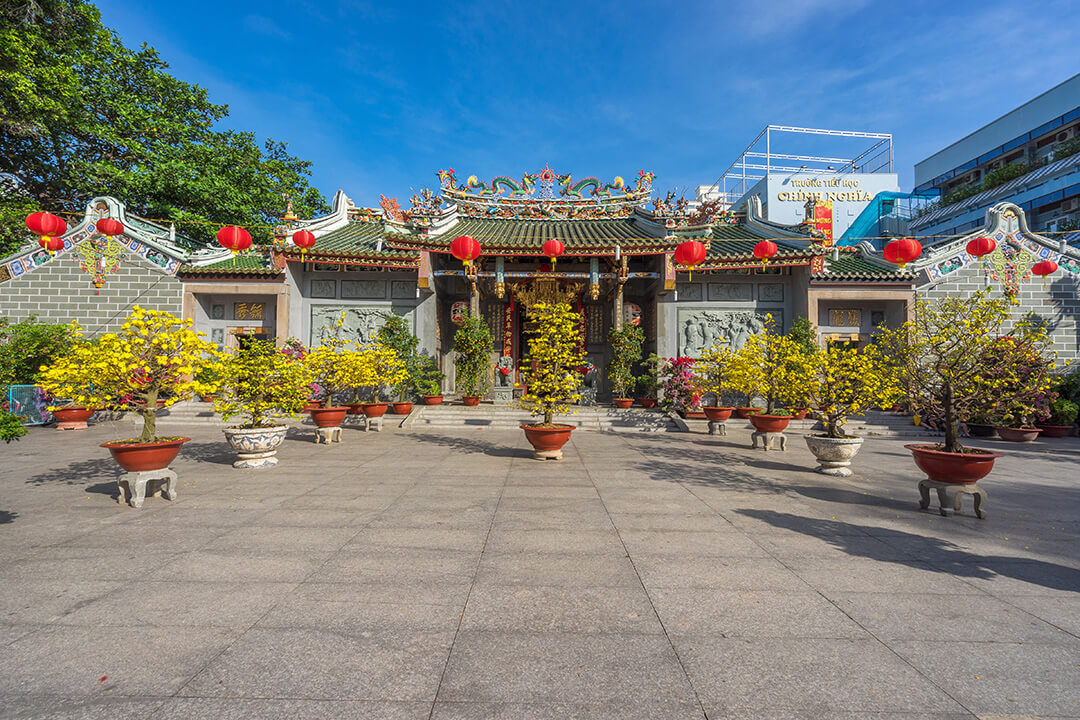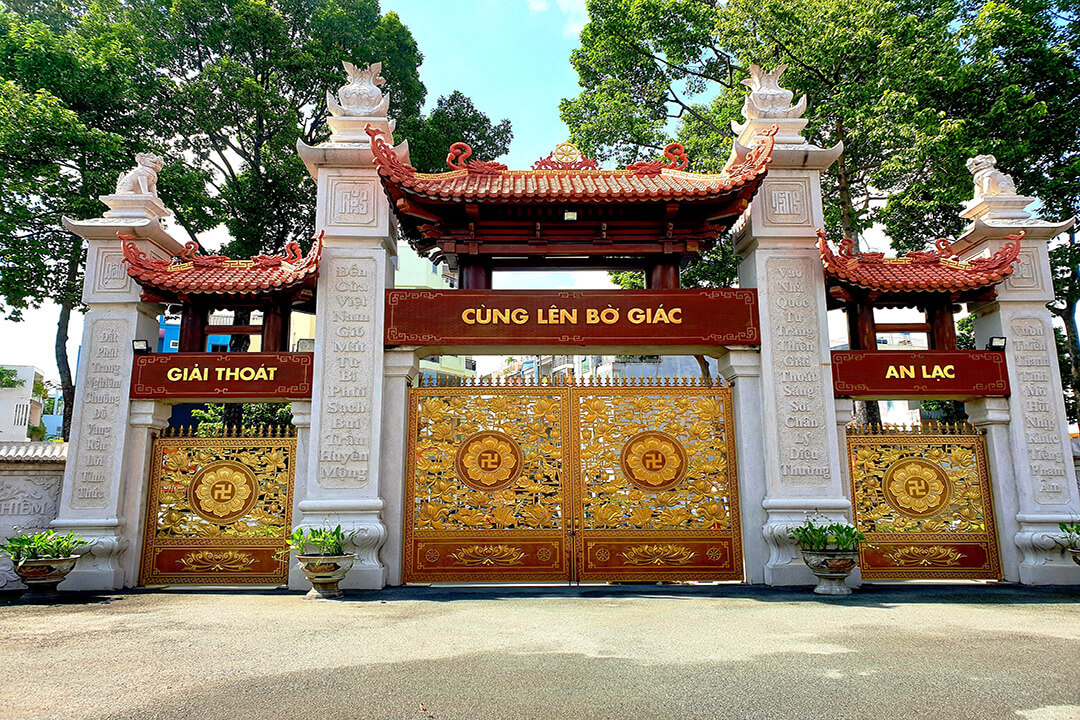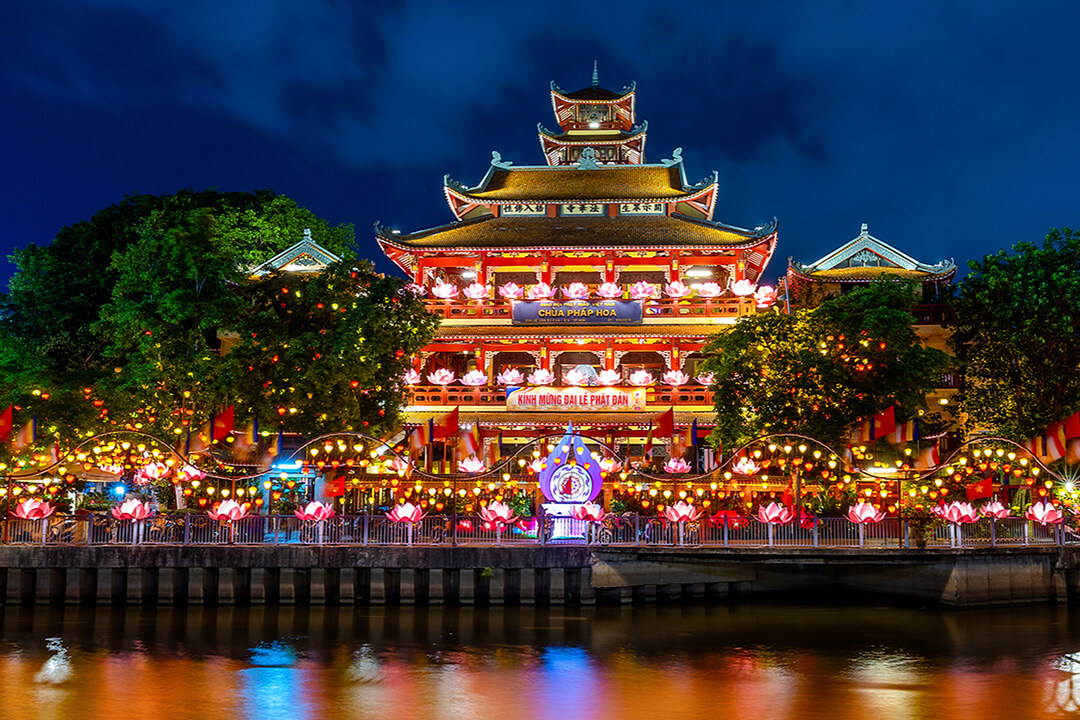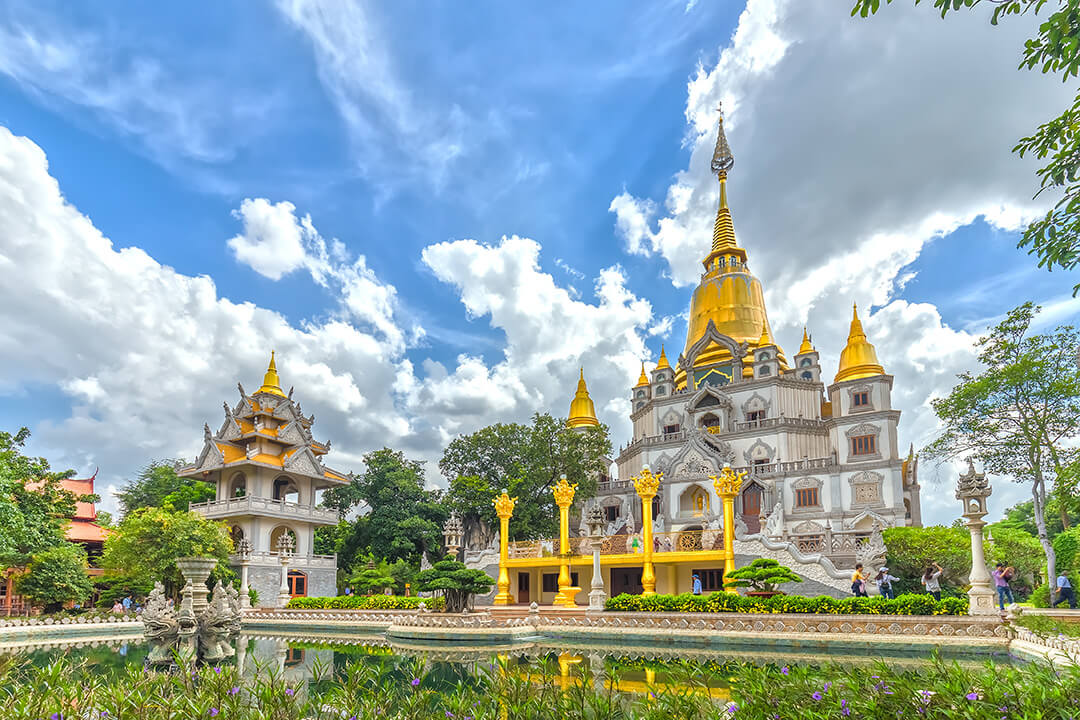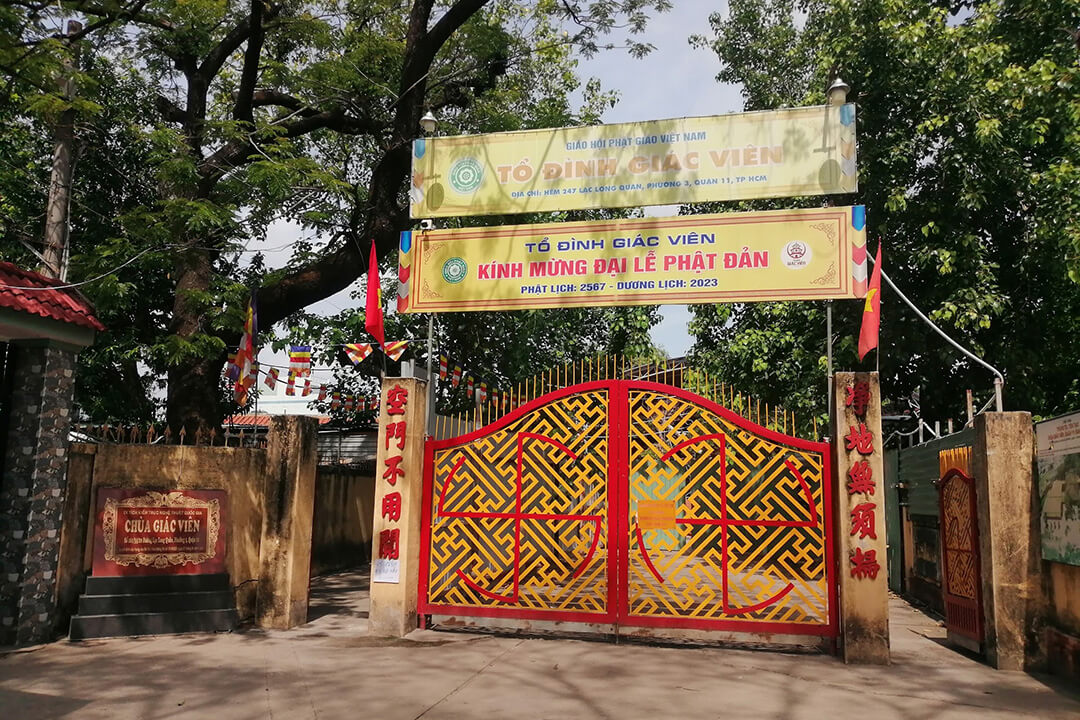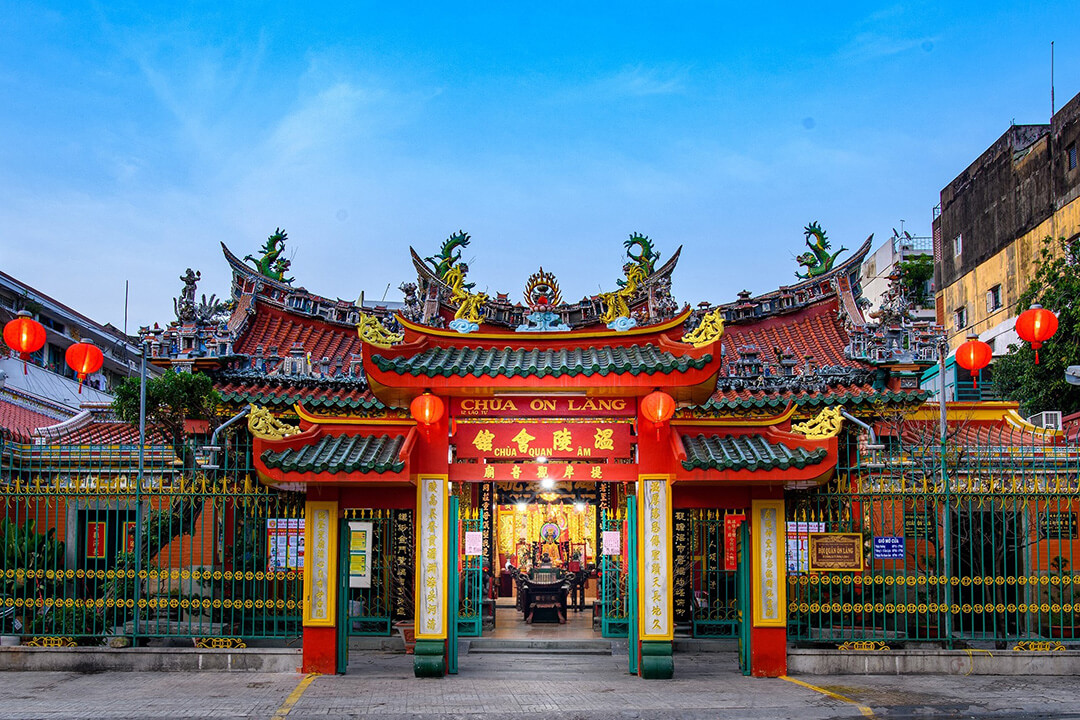Nov - 03 - 2025
Chantarangsay Pagoda is a colorful cultural gem along the Nhieu Loc Canal, offering a tranquil escape from Ho Chi Minh City’s busy rhythm. As the first Khmer temple in the city, it stands as a spiritual haven, a symbol of Khmer heritage, and a keeper of ancient traditions. In this GTrip guide, we’ll explore its rich history, unique architecture, vibrant festivals, and share practical tips to help you experience one of Saigon’s most authentic cultural treasures.
Overview of Chantarangsay Pagoda
- Address: Hoang Sa Street, Xuan Hoa Ward (formerly Vo Thi Sau Ward, District 3), Ho Chi Minh City
- Opening hours: 7:00 AM - 9:00 PM daily
- Entrance fee: Free
- Best time to visit: During major Khmer festivals such as Chol Chnam Thmay, Sen Don Ta, or Kathina for the most vibrant experience.
Chantarangsay Pagoda, whose name translates to “Moonlight Pagoda”, holds the distinct honour of being the first Khmer Theravada Buddhist temple built in Ho Chi Minh City. Founded in 1946, this sacred site spans a generous 4,500 square meter plot and serves as a vital cultural anchor for the Khmer people in southern Vietnam. The pagoda is not merely a place for quiet contemplation and religious ceremony, it is a dynamic institution dedicated to the preservation and promotion of Khmer heritage. This mission thrives through worship, free Khmer language classes for local youth, and vibrant traditional festivals that attract visitors citywide. Its gates welcome all, from devoted followers and locals to curious visitors exploring Theravada Buddhism and Khmer culture.

Chantarangsay Pagoda stands as a spiritual and cultural hub preserving Khmer heritage through worship, education, and traditional festivals
History of Chantarangsay Pagoda
The pagoda’s history is a compelling story of community, faith, and perseverance, charting its growth from humble beginnings to its current status as a cornerstone of Khmer life in the city.
| Year/Period | Event |
|---|---|
| 1946 | Founded by Venerable Lam Em, the first Khmer Theravada Buddhist temple in Saigon-Gia Dinh. |
| 1949 - 1953 | The main hall was constructed of concrete, consecrated in 1953. |
| 1967 - 1969 | Expansion with Sala, monks’ quarters, Pali school, and stupa. |
| Post - 1975 | Became a cultural and educational hub for Khmer communities in Ho Chi Minh City. |
| 2000s - present | Seven renovations completed, the pagoda continues to host festivals, Khmer language classes, and rituals. |
| Current leadership | Abbot: Venerable Danh Lung, Vice Chairman of HCMC Buddhist Sangha Theravada Khmer Institute. |

Chantarangsay Pagoda’s history reflects the enduring faith, unity, and resilience of the Khmer community in Ho Chi Minh City
Architecture of Chantarangsay Pagoda
The architecture of Chantarangsay Pagoda bears the distinctive features of Khmer Theravada Buddhist design, built in the traditional style of the Southern Khmer people. Covering an area of about 4,500 square meters, the pagoda complex is spacious and well-organized. It includes several structures such as the main hall (vihara), sala (lecture hall), stupa, flagpole, monks’ quarters, and various auxiliary buildings.
The main hall serves as the spiritual center of the pagoda and features three octagonal towers symbolizing the Triple Gem and the Noble Eightfold Path. The highest tower is crowned with a Nirvana symbol, representing ultimate liberation. Intricate reliefs of Naga serpents, Garuda birds, lotus motifs, and geometric patterns surround the hall, enhancing its sacred grandeur. Inside, murals illustrate the life of the Buddha and Khmer Buddhist legends, including the famous depiction of Rahu swallowing the moon on the ceiling.
The pagoda gate is solidly built with a box-shaped foundation and four sturdy pillars, each topped with mythical guardian creatures that embody both aesthetic and spiritual meaning. Flanking the entrance are two lion statues, symbolizing wisdom and enlightenment.
Within the grounds, the two-tiered square stupa is used to enshrine the ashes of monks and lay Buddhists. Every structure in the pagoda harmoniously blends artistic beauty with profound spiritual significance, vividly reflecting the traditional culture and faith of the Southern Khmer community.
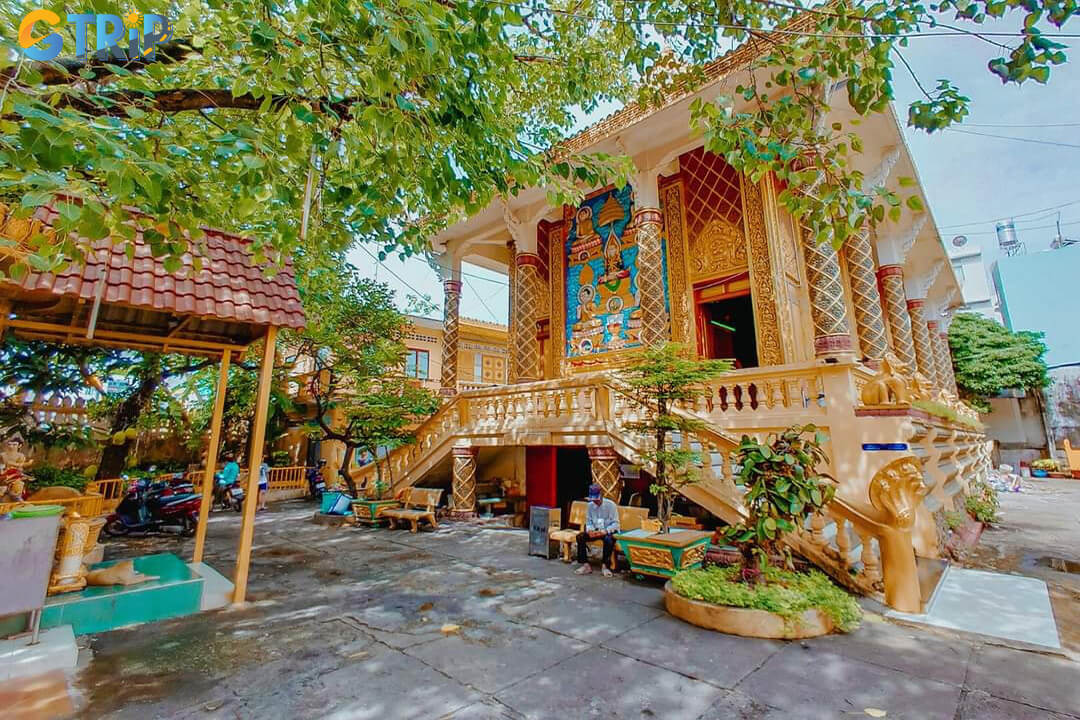
Chantarangsay Pagoda embodies Khmer Theravada architecture, blending ornate towers, sacred carvings, and spiritual symbolism that reflect the heritage
Things to do at Chantarangsay Pagoda
Before delving into the pagoda’s intricate architecture and peaceful atmosphere, take time to experience its living culture. Chantarangsay Pagoda is not just a place of worship. Here, visitors can witness age-old traditions, vibrant festivals, and everyday practices that keep Khmer Buddhism alive. Joining colorful celebrations, learning about monastic life and community education, each experience offers a window into the enduring spirit and devotion that define this sacred place.
1. Join Khmer Buddhist Festivals
One of the most enriching things to do is to immerse yourself in the lively atmosphere of a traditional Khmer festival. As the primary center for the Khmer community in Ho Chi Minh City, Chantarangsay Pagoda hosts several major annual celebrations that are a spectacle of faith and culture. The most important is Chol Chnam Thmay, the Khmer New Year, which takes place in mid-April. During this three-day festival, the pagoda buzzes with energy as families bathe Buddha statues for blessings and join joyful water-splashing rituals symbolizing purification and good fortune.
Other major events include the Sen Don Ta festival honoring ancestors and the Ok Om Bok harvest festival thanking the Moon deity for abundance. Attending one of these events offers a rare opportunity to witness the vibrant traditions, colorful costumes, and deep-rooted spiritual practices of the Southern Khmer people. It turns a simple visit into a profound cultural exchange.
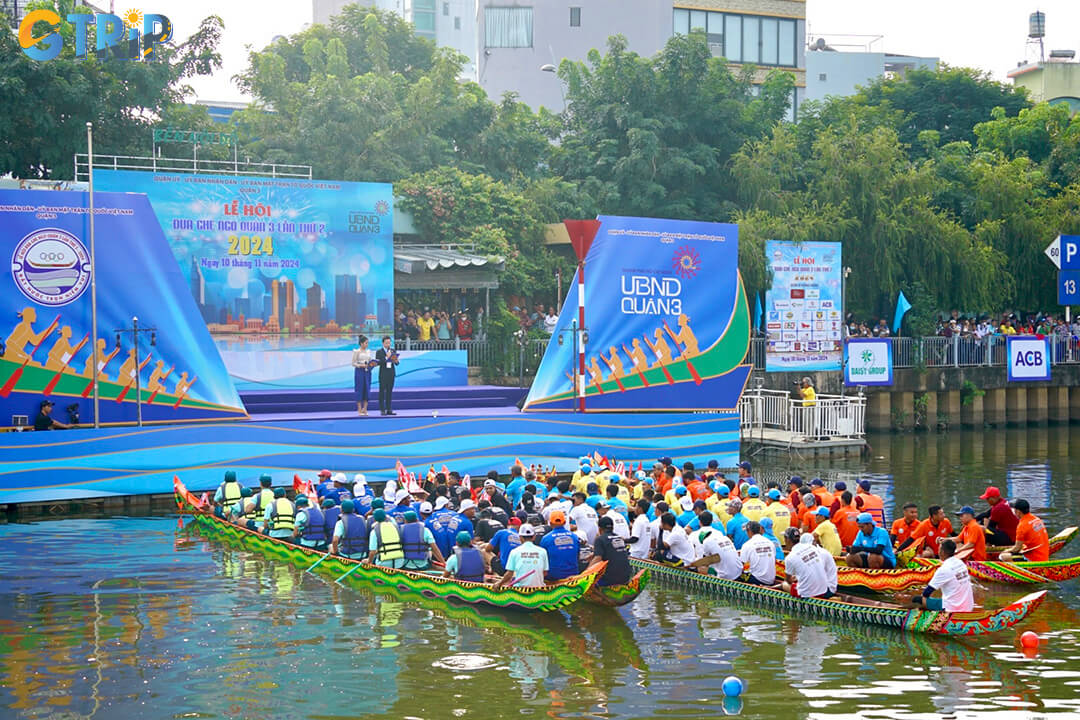
Immerse yourself in Chantarangsay Pagoda’s vibrant festivals, where Khmer faith and culture come alive in joyful celebration
2. Explore the main hall and admire the murals of Buddha’s life
Take your time to truly explore the magnificent main hall, the largest and most significant structure within the pagoda. Oriented eastward to welcome the dawn, the hall is designed to inspire reverence and contemplation. Step inside and let your eyes adjust to the serene interior. Gaze up at the high ceilings and the incredibly detailed, colorful murals that adorn every wall. They form a continuous narrative depicting the life of Siddhartha Gautama, from his royal upbringing to his renunciation, enlightenment, and teachings.
At the hall’s heart stands the main altar, where Buddha statues are arranged in a multi-tiered configuration. This central point of worship is where devotees offer prayers and incense. As you walk through the hall, pay attention to the architectural details, particularly the intricate Khmer-style carvings on the pillars and roof beams. The blend of sacred art and craftsmanship makes exploring the main hall a moving experience that connects you to the community’s heritage.
3. Learn about Khmer traditions through "Temporary Ordination"
A fascinating and deeply respected tradition within the Khmer culture is the practice of "temporary ordination to gain merit". This important rite of passage involves young men entering the pagoda for a period of time, ranging from a few weeks to several months or moredriver-to live as novice monks. Typically undertaken upon reaching adulthood, this practice serves multiple purposes. It allows a son to express deep gratitude and honor his parents. It also helps him cultivate character through discipline and Buddhist study. In doing so, he gains maturity and respect within the community.
While visitors cannot participate, you can learn about the profound meaning and intricate rituals associated with this unique cultural tradition by observing the life of the pagoda. This practice underscores the temple’s role as an educational institution that shapes individual character and strengthens community bonds. Asking a monk about the significance of this practice can offer deep insights into the values that underpin Khmer society.
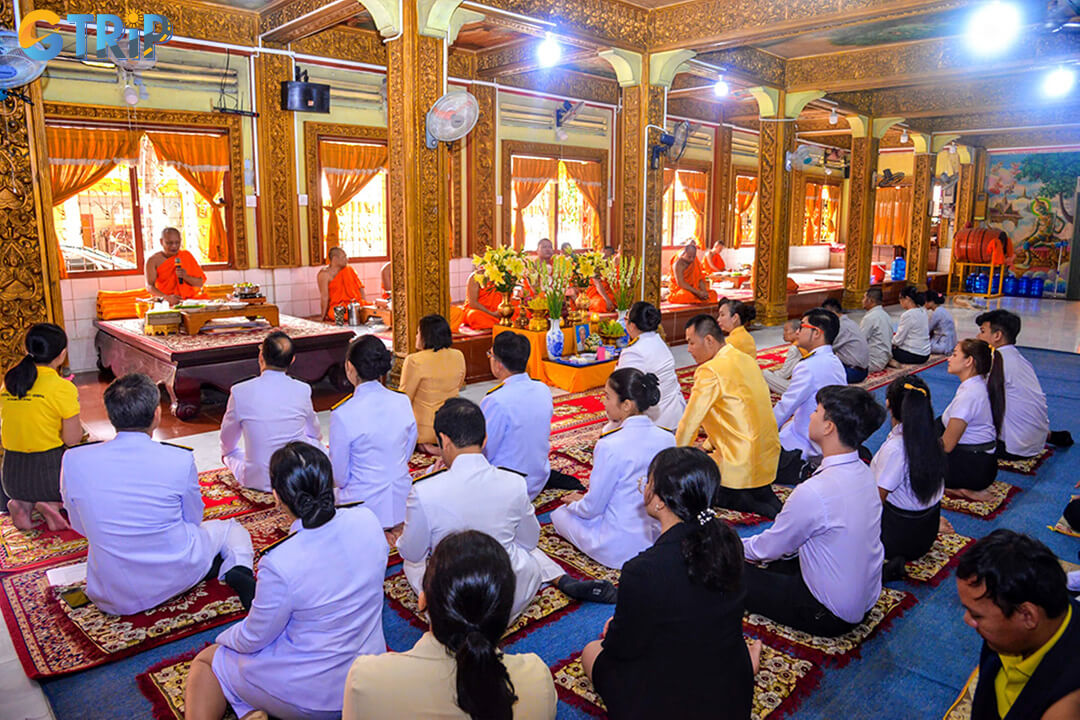
Discover the Khmer tradition of temporary ordination, a rite of passage where young men live as monks to honor their parents, cultivate virtue
4. Attend free Khmer language classes
Reflecting its vital role as a cultural bastion, Chantarangsay Pagoda actively works to preserve the Khmer heritage for future generations by offering free Khmer language classes. These classes are open to children from the local community and anyone else with a sincere interest in learning the language. The primary goal is to maintain and develop proficiency in listening, speaking, reading, and writing Khmer script. This helps preserve an essential part of their identity amid Ho Chi Minh City’s urban landscape.
Each class typically hosts between 30 to 50 students, and visitors may catch a glimpse of these sessions taking place in the Sala or other quiet corners of the pagoda grounds. The sound of children reciting their lessons adds a wonderfully authentic and living dimension to the pagoda's atmosphere. It’s a powerful reminder that this is not a static monument, but a thriving center of learning and cultural continuity, actively nurturing the roots of the Khmer community.
5. Interact with monks to understand Theravada Buddhism
As the city’s first Khmer Theravada Buddhist temple, Chantarangsay Pagoda is a significant place of study and practice for many monks. For curious visitors, this presents a valuable and unique opportunity to engage in genuine conversation and gain deeper insights into one of the world's major religions. The monks at the pagoda are often open to speaking with respectful visitors during their less busy hours. Engaging with them can illuminate the core teachings of Theravada Buddhism, the daily routines of monastic life, and the spiritual significance behind the art and architecture you see around you.
This is a chance to ask questions and learn directly from practitioners. For visitors who wish to have a more structured learning experience, a guided tour can often facilitate these interactions. GTrip can help bridge the cultural and linguistic gap, ensuring a respectful and enlightening exchange. This direct interaction can transform your visit from a sightseeing trip into a meaningful educational journey, providing a memorable connection to the spiritual life of Vietnam.
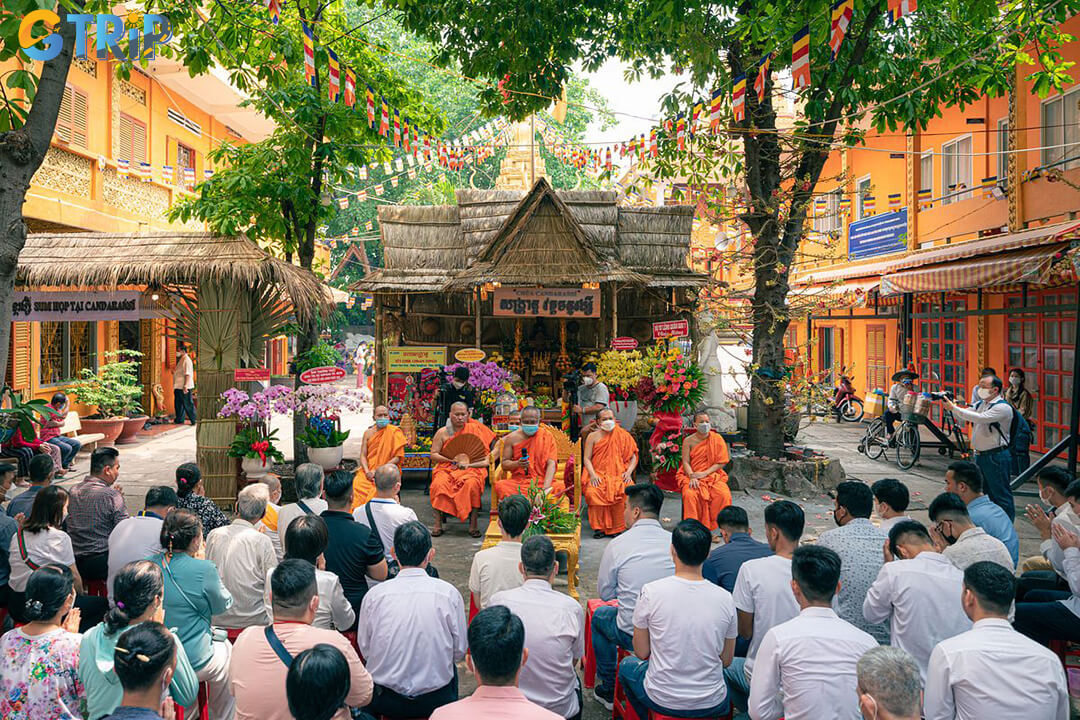
Engage with the resident monks at Chantarangsay Pagoda to gain authentic insights into Theravada Buddhism, monastic life, and the spiritual meaning
How to get to Chantarangsay Pagoda
Getting to the pagoda from central Ho Chi Minh City is simple and convenient. Here are the best options:
- Taxi or motorbike: From the city center, a taxi or motorbike ride is the quickest option, typically taking around 10-15 minutes. Just follow Vo Thi Sau Street until it meets Hoang Sa Street along the canal.
- Ride-hailing app: Using an app like Grab (for a car or motorbike) is highly recommended for first-time visitors. It’s affordable, easy, and eliminates any language barrier with the driver-simply type "Chantarangsay Pagoda" as your destination.
- Public bus: Several public bus routes pass through District 3 and have stops near Hoang Sa Street. Use a local bus app to find the best route from your location.
- Walk or cycle: For those staying nearby or who enjoy exploring on foot, a walk or bicycle ride along the scenic Nhieu Loc Canal path is a beautiful way to approach the pagoda.
Nearby attractions to Chantarangsay Pagoda
After your visit, you can easily explore several other fascinating attractions located nearby:
- Phap Hoa Pagoda: Just a short walk away, this beautiful Mahayana Buddhist pagoda sits along the Nhieu Loc Canal. It is famous for its breathtaking display of thousands of lanterns during the Vesak (Buddha's Birthday) celebration.
- War Remnants Museum: Only a 5-minute drive from the pagoda, this essential museum offers a powerful and sobering look at the Vietnam War through striking photographs and exhibits. It provides crucial context for understanding the country’s modern history.
- Notre-Dame Cathedral Basilica of Saigon: An iconic landmark of Ho Chi Minh City, this stunning cathedral is a prime example of French colonial architecture. It also stands as a testament to the city’s diverse historical influences.
- Ben Thanh Market: Visit the city's most famous and bustling market to dive into a whirlwind of activity. It’s the perfect place to practice your bargaining skills, shop for souvenirs, and sample an incredible variety of local street food.
- Tan Dinh Church: Famous for its striking pink Gothic Revival facade, this “Pink Church” is a favorite photo spot. It’s also a vivid example of the city’s architectural diversity.
- Independence Palace: Also known as the Reunification Palace, this historic site was once the presidential residence. It marks the symbolic end of the Vietnam War in 1975.
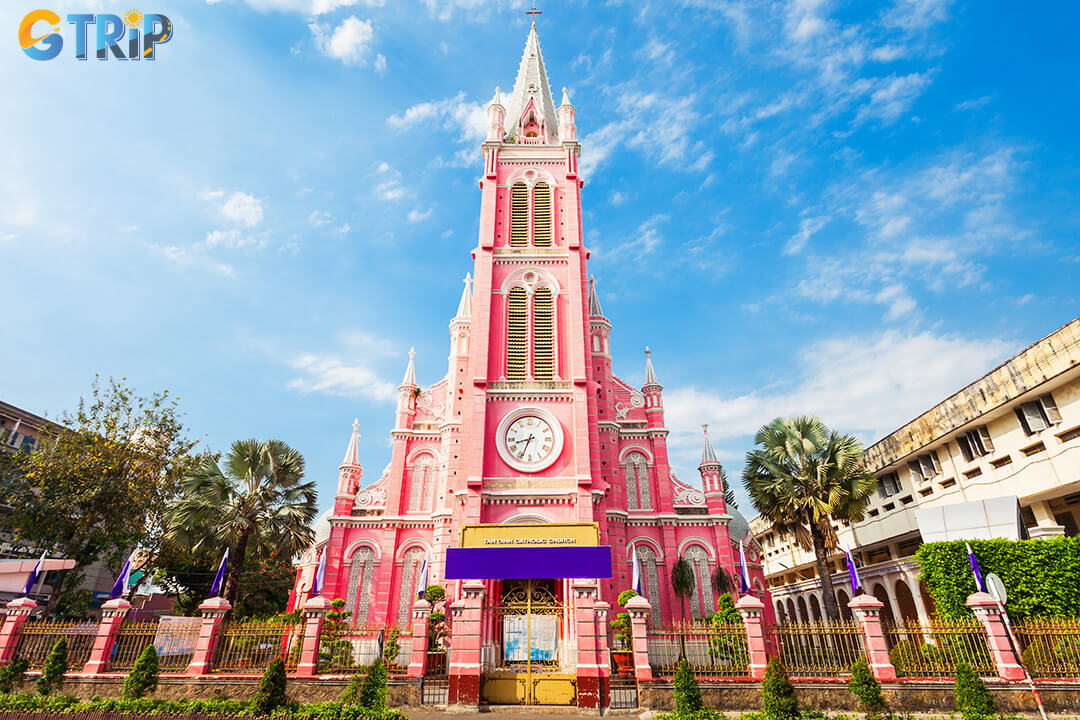
Explore nearby landmarks such as Phap Hoa Pagoda, War Remnants Museum, Notre-Dame Cathedral, Ben Thanh Market, Tan Dinh Church, and Independence Palace
Practical tips for visiting Chantarangsay Pagoda
To ensure your visit is respectful and enjoyable, keep these simple tips in mind:
- Dress modestly: As this is a place of religious worship, dress respectfully by covering your shoulders and knees. Avoid shorts, short skirts, and tank tops.
- Remove your shoes: Always take off your shoes before entering the main prayer hall and other designated sacred areas.
- Photography etiquette: Photography is generally allowed on the grounds, but be mindful and respectful. Avoid using flash photography inside the main hall, as it can damage the murals.
- Respect worshipers: The pagoda is an active place of worship. If you see people praying or a ceremony in progress, keep a respectful distance and maintain a quiet demeanor.
- Visit during festivals: For the most vibrant and memorable experience, plan your visit during one of the major Khmer festivals like Chol Chnam Thmay.
- Donations are welcome: While there is no entrance fee, small donations are greatly appreciated and go toward the maintenance of the pagoda and support for the monastic community.
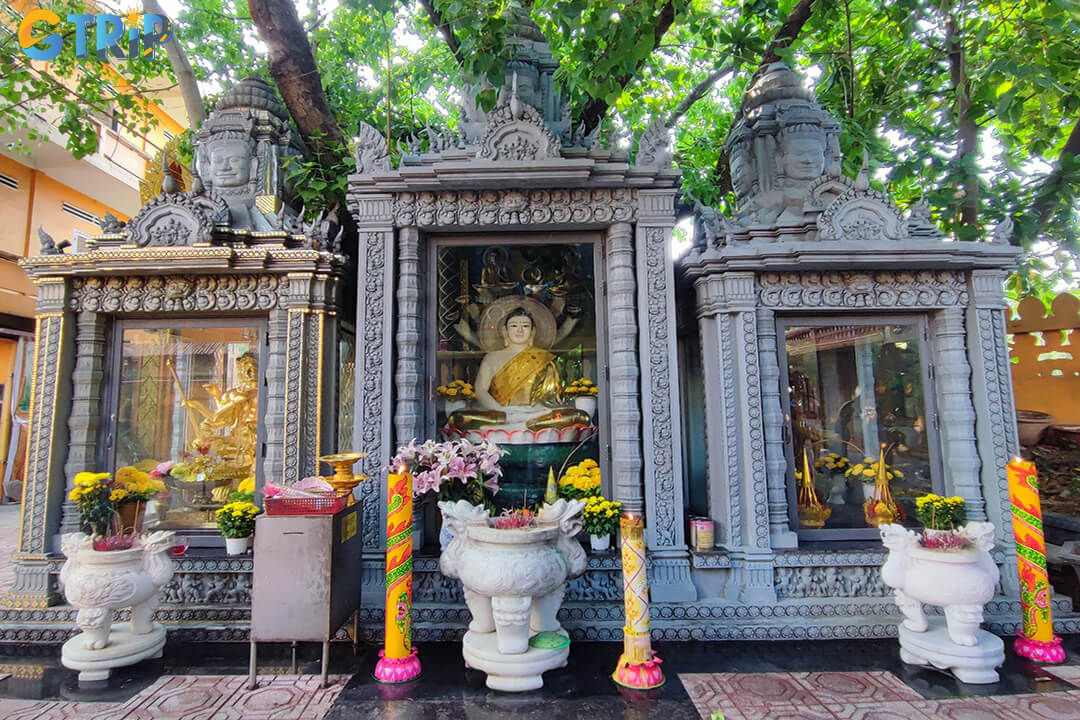
Essential tips to ensure a respectful and meaningful visit to Chantarangsay Pagoda
A visit to the Chantarangsay Pagoda offers much more than just a photo opportunity. The pagoda is a deep dive into a rich and resilient culture that thrives within modern Ho Chi Minh City. It is a place where architectural wonder, spiritual tranquility, and living traditions converge. Here, you can admire the soaring roof spires, explore vivid murals depicting the Buddha’s life, and feel the strong sense of community, especially during festivals. It is a spiritual oasis that provides a unique counterpoint to the city's commercial energy, revealing a story of faith, identity, and perseverance. For an itinerary that balances iconic sights with profound cultural discoveries, let GTrip - Vietnam Travel Agency guide you. Be sure to add this unforgettable Khmer gem to your Ho Chi Minh City journey for a truly enriching experience.

